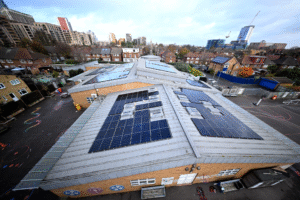In a world of increasing intensity – from wildfires to floods – knowing what to expect is more challenging than ever. Josh Gilbert, CEO of climate analytics specialist Sust Global, explains how to expect the unexpected, protect and adapt.
In a rapidly changing world grappling with more frequent and extreme weather events, our understanding of climate change from past patterns is obsolete and could be dangerously misleading. Climate change, as concluded by the IPCC’s sixth assessment report in 2021, is reshaping our reality. What was once considered ‘rare’ is becoming commonplace, and our tools for prediction need a serious overhaul.
It’s more than hotter summers and heatwaves. Our entire weather system is shifting, changing the way rain, plants, and other elements interact. This shift has been described as ‘global weirding’ and it’s leading to a world where weather gets more unpredictable and intense. The complex systems that make up our planetary environment are changing.
In the global weirding era, nothing is as it seems, or intuitively should be. For example, historically the types of vegetation in an area are closely shaped by prevailing climate conditions, with dense vegetation in wet rainforests and sparse plant life and arid conditions in deserts. These norms are being disrupted – deserts experience more rainfall, rainforests might dry out. This creates environments with dense vegetation but insufficient rain, meaning a much higher risk of severe wildfires in areas where they were previously rare.
Uncertainty is also apparent when looking at new patterns of tropical cyclones, hurricanes and typhoons, as they’re called in different parts of the world. The warming air and seas, shifting wind patterns, and changing ocean currents might all play a role in their increasing intensity. But even experts at the IPCC tread lightly when talking about this link, and many models point to a relative continuation in frequency, but an extreme increase in severity when compared to the past.
And climate change is like a domino effect. Think about Hurricane Ian’s destruction made worse by constantly rising sea levels and intense rainfalls. Or the strong winds that led to devastation across Maui, or California’s near-constant drought conditions fueled by extreme heat, drying out plants and setting the stage for devastating wildfires.
To further confuse matters, even efforts to mitigate our impact on the climate can have strange consequences. For example, laws banning sulphur-based fuels used by tankers in key shipping lanes were aimed at reducing emissions. In the long-term this will have benefits, but in the short term it has led to an increase in temperatures across many of these areas, caused by the removal of the sulphur-based compounds which were shielding areas of the planet from more extreme weather conditions.
In all this chaos, predicting future climate risk is becoming a tougher game. In the past, teams would build regression-based models which rely on historical data for future events. But that approach is becoming less reliable as climate-induced disasters change in frequency and intensity.
Places that once saw the occasional grass fire now experience intense blazes. There are tropical cyclones that venture to unusual northern territories like Canada and Alaska, and floods formerly labelled ‘one in a 1000-year’ events have grown startlingly regular.
Even more eye-opening, recent wild weather shifts – such as ferocious wildfires and temperature surges – are outpacing the most extreme predictions of what climate change would look like, including those from the IPCC. The newly introduced CMIP6 models, even when evaluated against past events, have consistently underestimated the severity of our new weather extremes.
So, where does this leave us? I see three key points that can help us understand our planet better in an era of global weirding.
- Acknowledge that using solely historic data for future predictions no longer works. Our climate’s fundamentals are shifting, and our models need to reflect that.
- Harness new data sources. The richness of data now available to us – from real-time satellite imagery to advanced marine heat wave metrics – provides a promising foundation.
- Embrace AI-based technologies. Companies using AI to identify and analyse climate risks are getting better at integrating an array of new data streams into modelling outcomes through deep learning and artificial intelligence. Such technologies can help us to integrate more recent variation in temperatures, and understand changes in the next 5 years, rather than predicting for next century
This is not just about adapting our models but also our mindset, recognising that both adaptation and mitigation are no longer choices but necessities. It’s high time for policymakers, businesses, and individuals to embed climate considerations into long-term strategies, ensuring we’re investing in the risk models that are equipped to face the multifaceted challenges of our changing climate.
More on modelling and climate change:
New flood resource assesses groundwater, 9m homes at risk this winter
How AI can reshape renewable energy optimisation and climate modelling
Image: Ray Harrington (top) / Malachi Brooks (middle) / Keagan Henman (bottom)















